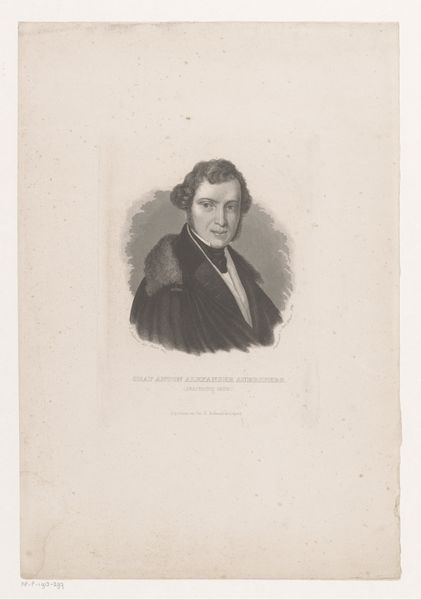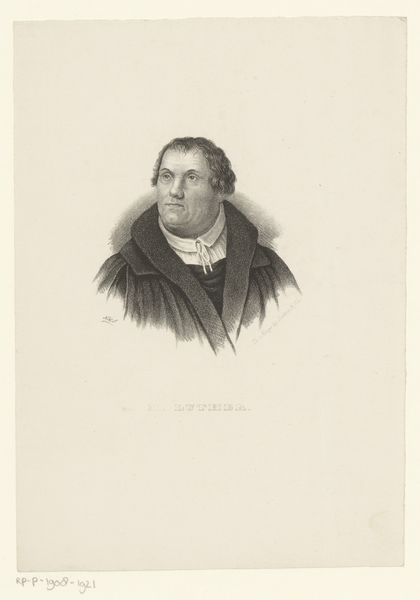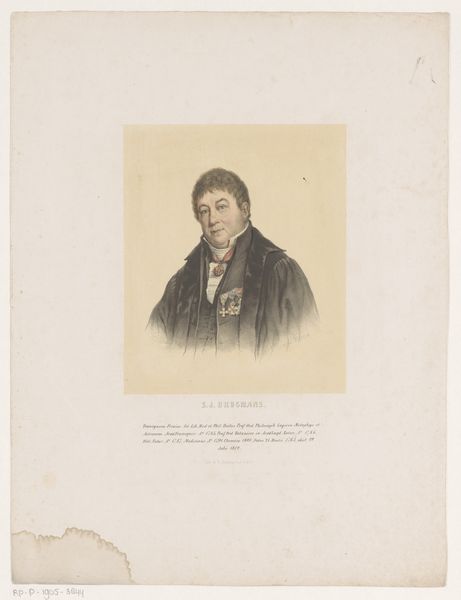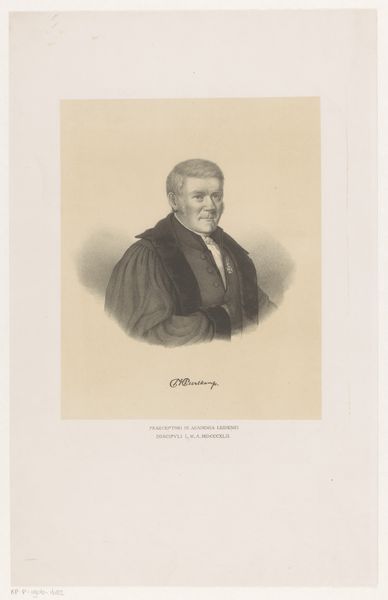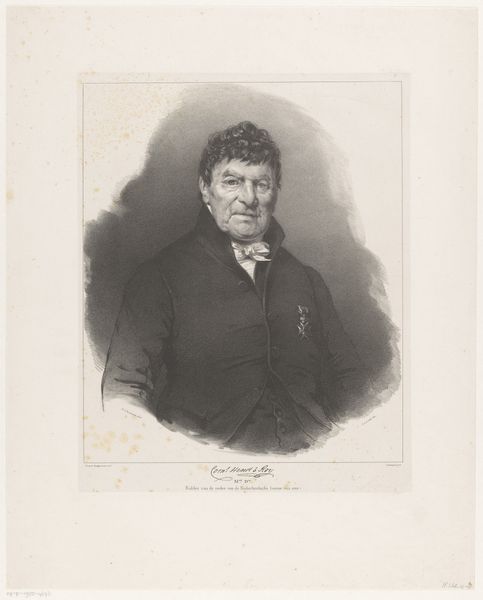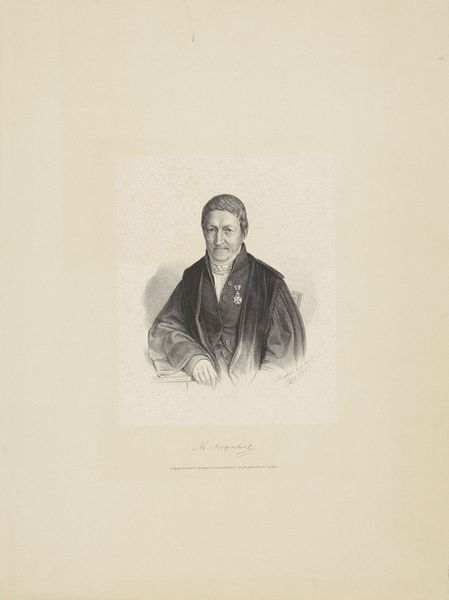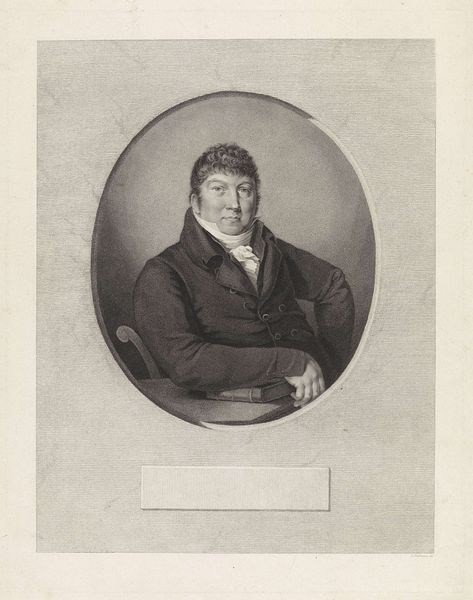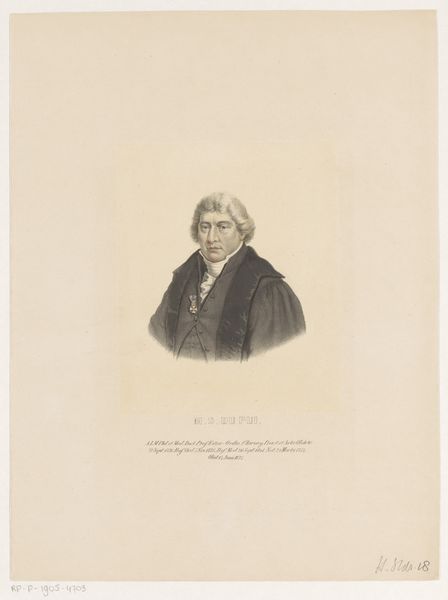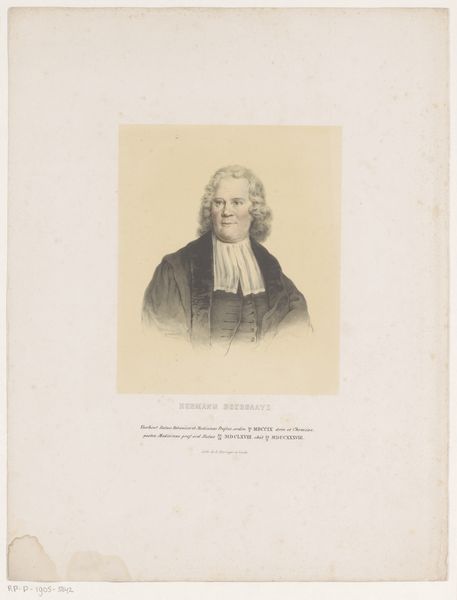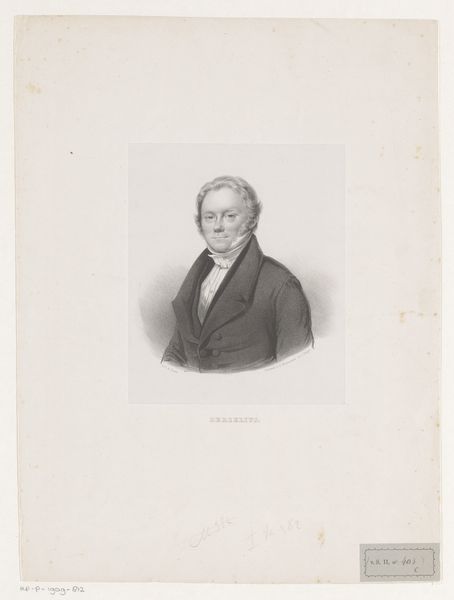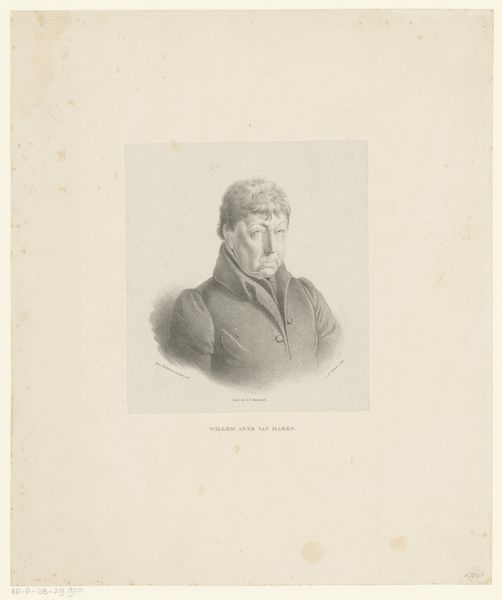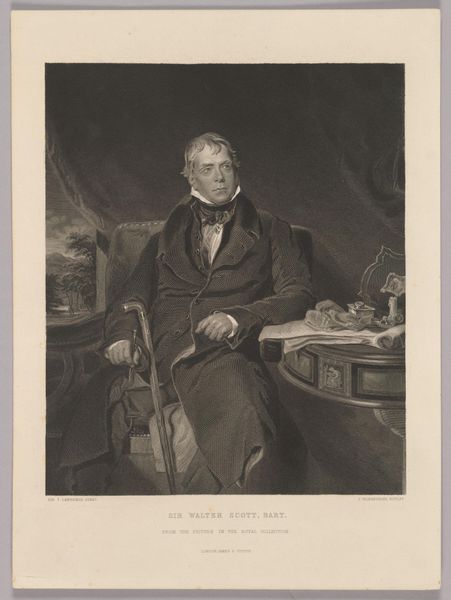
lithograph, print
#
portrait
#
pencil drawn
#
lithograph
# print
#
pencil sketch
#
caricature
#
pencil drawing
#
romanticism
#
portrait drawing
#
history-painting
Dimensions: height 417 mm, width 325 mm, height 311 mm, width 247 mm
Copyright: Rijks Museum: Open Domain
Heinrich Ditlev Mitreuter created this portrait of Friedrich Georg Wilhelm Struve using lithography, a printmaking process, in 1844. Lithography involves drawing on a flat stone or metal plate with a greasy substance, then applying ink which adheres only to the drawn areas. The print is then made by pressing paper against the prepared surface. This technique allowed for the relatively quick reproduction of images, making art more accessible to a wider audience. Look closely, and you can see the subtle gradations of tone achieved through this method, giving the portrait a sense of depth and realism. The choice of lithography, a relatively new and efficient technique, reflects the changing landscape of art production in the 19th century. It was a process well-suited to the demands of a growing market for images, and the rise of illustrated publications. Consider how the process influences our perception of the subject: does the relatively democratic medium of printmaking affect our understanding of the sitter's status and significance? Paying attention to these materials, and means of production, helps us see past traditional categories of fine art, and towards a broader understanding of visual culture.
Comments
No comments
Be the first to comment and join the conversation on the ultimate creative platform.
